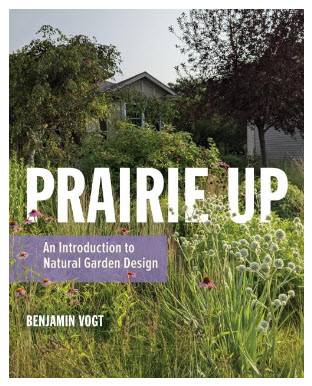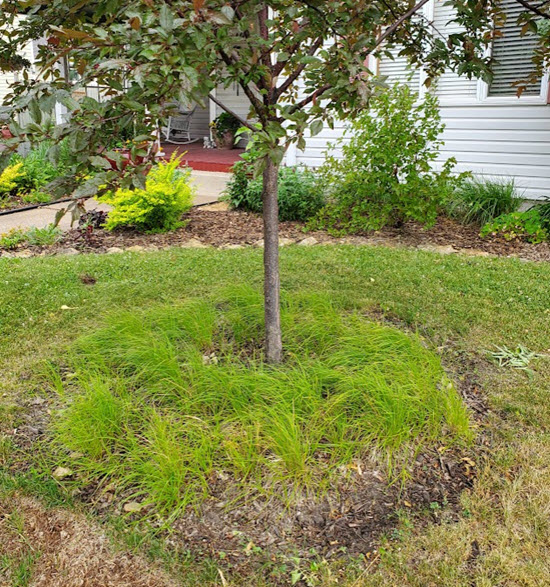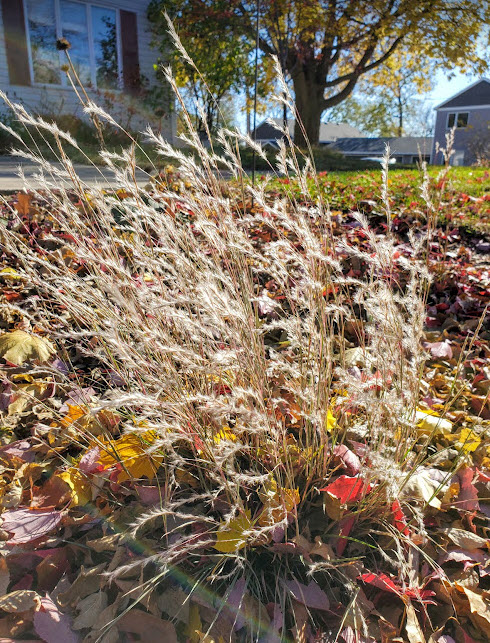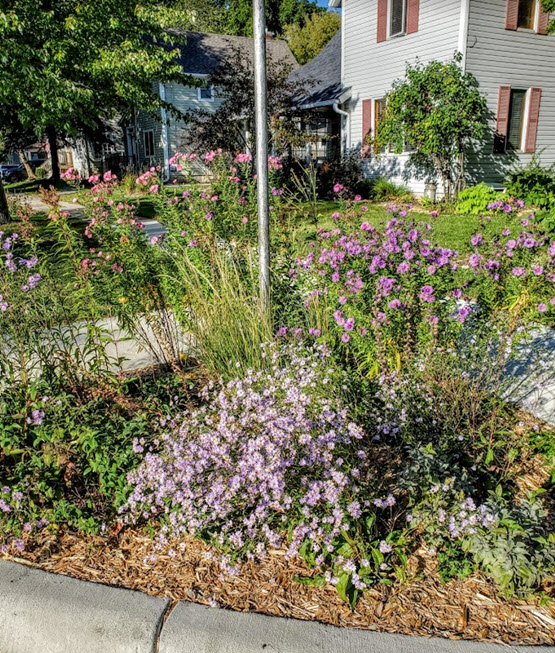Click below to listen to my 2 min. Garden Bite radio show/podcast: Prairie up – your lawn converted
Many years ago I interviewed Benjamin Vogt on his book “A New Garden Ethic’. Last December I mentioned his latest book, “Prairie Up – an Introduction to Natural Garden Design”. It was just released last Tuesday, January 24th.

Vogt is a native to Minnesota, growing up in the western suburbs when they were NOT suburbs. He talks about when, during an exploration of the undeveloped land, a flock of geese flew overhead and that sound mixed with the natural quiet, awoke that primal desire for wild spaces. In his new book, “Prairie Up – An Introduction to Natural Garden Design” Vogt shares his expertise with prairie plants aimed at gardeners and homeowners, making big ideas about design approachable and actionable.
Below is my front yard. Planted under the ‘Royal Raindrops’ crabapple is Pennsylvania Sedge. My plan is to continue to expand this grass and take out my lawn. I will do this in stages!

Your lawn is really only attractive to one species, humans. However, it’s also prime prairie space. You can convert it to accommodate many more species. Diversity is key to survival.
Vogt says when you convert the lawn space to prairie you are also providing cleaner air and water! Chemicals are not used.
When considering converting to prairie, start small. This helps ease YOU into it while also easing your neighbors, who may think you’re growing a weed bed, into it. Limit the number of species you plant and plant those en masse. Not just a plant here, a plant there. That is what my rain garden design has. You can also see all the coneflowers and grasses planted.

Although I have added other species because I can’t help myself! Vogt uses a technique called matrix planting. He explains: it’s a layered landscape that mimics natural ecosystems. His example is planting a base layer of bunchgrasses and sedges that act as groundcover and then adding masses and drifts of flowering natives that evoke a prairie.

Here’s the thing, you can make this all your own. Plant native species that work for YOUR area (light and soil compatible) and choose the ones you love.

